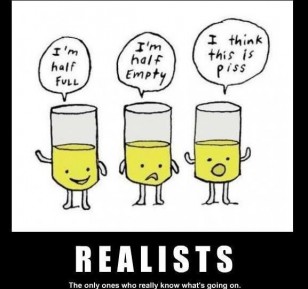Last night I received a painting by artist and blog member, Cara Lacharite, and it’s absolutely stunning. She channels her work and Erik downloaded information to her for this one. In the new book, Erik describes a portal through which insects cross over when they die. He said spirits gather to watch because they look like millions and millions of sparkler. It’s like a heavenly fireworks show. You can see that in the painting with what looks like countless fireflies. He also said that when he first crossed over, he manifested a log cabin type home and a mountainous horizon. More specifically, he made two mountains to look like woman’s breasts (of course)! You see all of that here! Again, thank you, Cara!
Me: Okay. Now you talk about this, but I want to see how this applies to this whole emotional resiliency—you talk about how we humans think and that evokes an emotions which causes a certain behavior or reaction. And you say that’s not good. I think—
Erik (interrupting): Buh, buh, buh, buh.
Me: Okay go ahead!
Erik: We’re trained to think first. That’s not our natural instinct. Okay, take it away, Mom.
Me: Well, let’s apply that whole sequence to the lack of emotional resiliency.
(Pause)
Jamie: Yeah, I don’t know what he’s doing.
She cuts her eyes toward him.
Me: You can never tell.
Jamie: Ask him the question again.
Me: In terms of poor emotional resiliency—now I don’t want to judge whether it’s poor or not—but how does the sequence of thinking first and that evoking an emotion which influences behavior relate to emotional residency? You can use a specific case like in divorce.
Jamie: He’s showing me an image of a birdcage.
Me: Okay.
Erik: If you think first and then have an emotional response after, pretty much you’re taking a birdcage and putting it on top of yourself. You’re containing yourself. You’re making yourself perform according to what your thoughts believe are the best result for you.
Me: Mm hm.
Jamie: He just shouted out a profanity.
Me: It’s okay. We’ll give you a break. You don’t have to translate words like that.
Erik: So basically, that’s horrible.
Jamie: “Basically.” That’s me covering up the word he said.
I know what it is, and it begins with an F.
Erik: You don’t want to do this. Most of the thoughts that you have are coming from your past experiences. They’re coming from your memories. They’re even coming from other lifetimes that you’ve led—past, present and future. They’re coming in from your environment. They’re coming in from how your mom taught you to be, how your dad taught you to be, the authority figure from third grade, what they put into your head. They’re not the closest link to who you are. Your emotions are the link to your true, true soul, spirit self.
Me: And you’ve said we are emotions.
Erik: Yes!
Me: We’re emotional beings.
Erik claps.
Me: I’m not a slow learner.
Not always, anyway.
Me: I’ve heard you say that many times, Erik. But go ahead.
Erik: So if you’re thinking first, you’re trying to get your emotions to behave in a way that’ll give you the result that’s more accepted by society than what you actually need.
Me: Yeah.
Erik: So it’s a performance. If you are able to look at how you’re feeling in the moment, asking yourself, “How do I feel about that? Is that how I really want my life to be? Is that how I really want my emotions to be and how I can connect?” If you’re asking yourself, then what you’re going to problem solve next will be true to yourself and not true to a system, somebody else’s system.
Me: Tell us about that different flow–emotions, thought, behavior—that you think is so important, which it is.
Jamie: Um.
Me: And you can relate that to emotional resiliency, too. Hopefully.
Erik: It is. It has to be because—look at how old you are.
Me: I’d rather not, but go ahead.
Erik: No, no, no. You look at how many years you have under your belt already, and all of those years, you’ve always been asked to think. “Think about it. Do a pros and cons list. What do you think is going to be the best option?” We’re always driven to a logical response. We give more attention and power to the brain than any other thing.
Me: I want to concentrate on the whole emotion, thought, behavior sequence that you—
Erik: Well duh, Mom, if you’d stop interrupting. Look at how many years we have of that training, and when we take being emotionally resilient, the biggest thing I’m asking you to do is identify how you’re feeling. Look at the subtle emotions as well as the big ones. Happy but nervous for example. So we have these layers. If you could put as much effort as how old you are and how you’ve been trained logically into identifying how you feel, then all of a sudden, you don’t have to be the captain of your ship steering and making plans and the weather and if we’re going to show up on time.
Jamie is mimicking Erik driving a boat, saluting, etc.
Jamie: He’s making all these gestures.
I chuckle.
Erik: You don’t. You just have to pay attention to how you’re feeling because you’re going to grow, bloom, arrive on time. You’re going to be exactly who you need to be, and there’s going to be no regrets. You’re going to be the best version of yourself ever in every single moment. Boom, no planning required.
Jamie: He says that with flair.
Me: So that would obviously help you bounce back from things that cause emotional stress.
Erik: Yes! And it would also help you see why you contain yourself within certain emotions all the time.
I guess he’s referring to the birdcage.
Erik: There are people who are out there who force themselves to stay happy, and that can be a detriment as well because you might not be authentically happy. You’re training yourself to be that way because you’re using it as an avoidance technique of something terrible that you’re feeling under the surface. So if you’re paying attention to how you feel, you’ll be able to note those and go, ”Oh, shit. I’m not doing so well by myself. I need to throw a rope out and get some third person perspective views on how I’m processing my emotions. Then I can really begin to save myself. Some people do it great all of their own.
Me: All right. Well we’ll going to wrap up soon so can you, in 30 seconds or less, talk about this. You know, some people are empaths and all this bad energy coming from other people and that might make it hard for them to bounce back, to be emotionally resilient. I guess.
Erik: No, because if you’re empathic, then you’re asking yourself, “How am I feeling?” You’re going to be identifying like, “Wait a second. What I’m feeling is not really mine!” It’s like you don’t possess it. It doesn’t reside within them. You’re resonating with the emotion, but it belongs to someone else. So in that moment, you’re harnessing—
Jamie: Harnessing?
(Long pause)
Jamie: That doesn’t make sense.
Erik: As you’re asking yourself, “How am I feeling,” you’ll be able to identify what belongs to somebody else and what really belongs to you. That will help your empathic skills. It’ll actually polish them off a little bit better. You can use them better.
Me: Okay. Good.
Erik: Ding!




